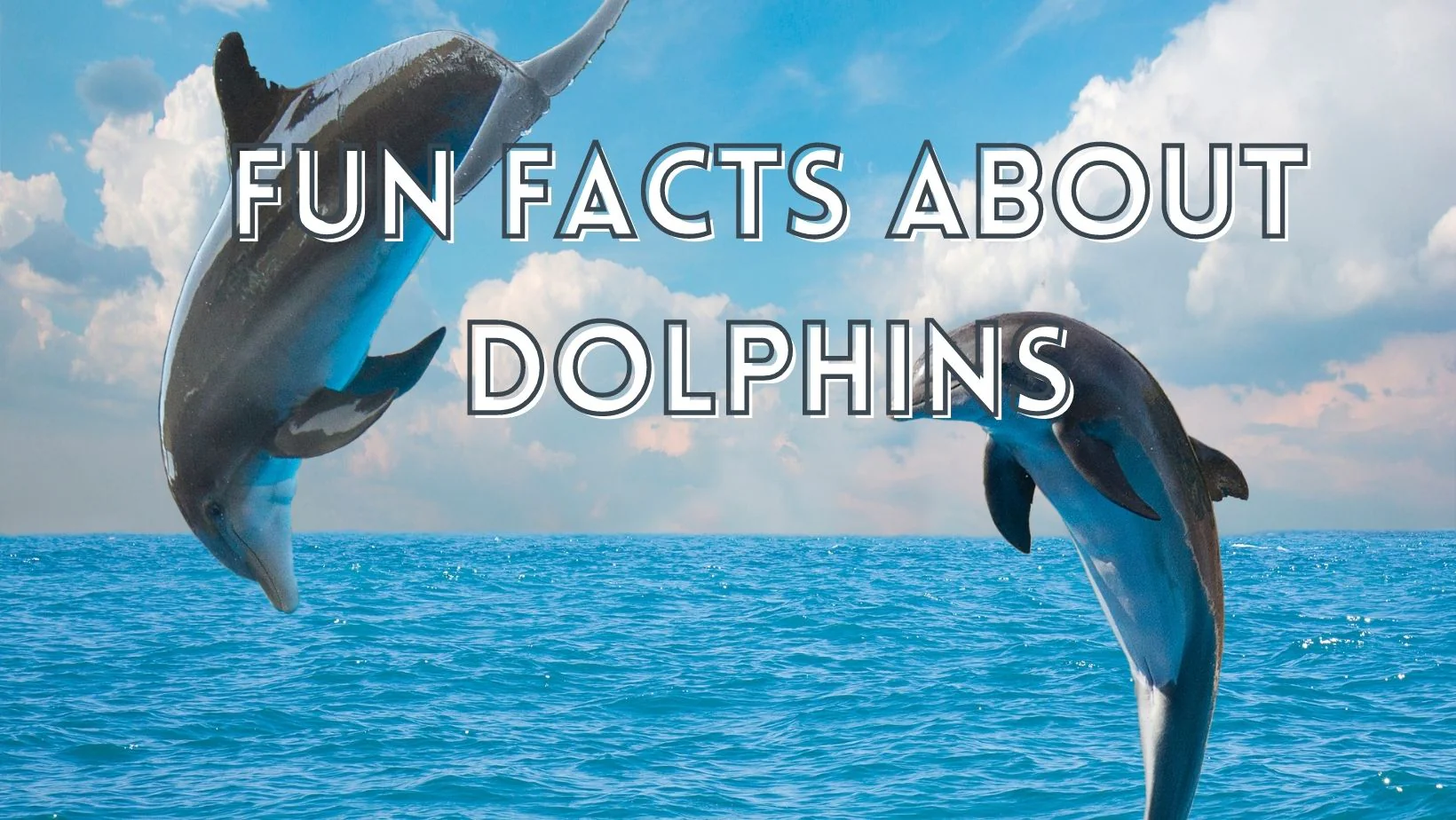Discover Just How Dolphin Facts Reveal Their Life-span and Mating Practices
Discover Just How Dolphin Facts Reveal Their Life-span and Mating Practices
Blog Article
Check Out the Globe of Dolphins: Unexpected Realities Regarding These Lively Animals
Dolphins, frequently popular for their playful behavior and social structures, exhibit a series of shocking behaviors that expand much past mere home entertainment. Their elaborate interaction approaches and advanced analytical abilities disclose a level of knowledge that remains to fascinate scientists. Distinct searching techniques and flexibility in numerous settings emphasize their placement as necessary players in aquatic ecological communities. These captivating animals encounter considerable conservation obstacles that might endanger their existence. As we discover the intricacies of dolphin life, one need to think about the ramifications of these hazards and the actions needed to ensure their survival.
Social Frameworks of Dolphins
Although dolphins are frequently viewed as solitary animals, they actually show facility social frameworks that play a critical function in their actions and survival. These frameworks are identified by the development of teams referred to as coverings, which may include a few people to several loads, depending on the species and ecological problems. Shells offer various features, including foraging, social interaction, and protection against predators.
Dolphins show a variety of social habits, consisting of cooperative hunting and nurturing of young. Within capsules, individuals usually create solid bonds, and partnerships can extend past prompt family links. These social connections are vital for the exchange of expertise and skills, specifically in searching strategies and navigation.
Additionally, the social dynamics within cases can be influenced by factors such as age, sex, and reproductive condition, resulting in a power structure that determines communications. Study indicates that these social frameworks enhance the general fitness of dolphins, enhancing their possibilities of survival in a varied array of marine settings. Therefore, comprehending the social frameworks of dolphins offers important insights into their ecological roles and conservation requirements, highlighting the importance of protecting their all-natural environments.
Interaction Abilities and Methods
Dolphins are renowned for their advanced communication skills, which play a crucial duty in their social communications and control within skins. These marine animals utilize an intricate system of articulations, body language, and echolocation to share details and develop social bonds. Their vocal repertoire includes clicks, whistles, and other sounds that offer different functions, from signaling presence to coordinating team movements during hunting.
Among one of the most interesting facets of dolphin communication is using signature whistles. Each dolphin establishes an one-of-a-kind trademark whistle, which operates in a similar way to a name, allowing people to determine and call each other. This customized communication improves social communication and promotes collaboration amongst shuck participants.
In addition to vocalizations, dolphins take part in non-verbal communication with body motions, such as jumping, appearing, and posturing. These behaviors can reveal feelings, purposes, and also playful interactions. Echolocation, an additional important method, enables dolphins to browse their atmosphere and find prey, more stressing their reliance on interaction for survival.

Knowledge and Problem-Solving Capabilities
Frequently considered as among the most intelligent species in the animal kingdom, dolphins display amazing have a peek at this website problem-solving capabilities see here that highlight their cognitive prowess. Research study has constantly revealed that these marine mammals possess advanced cognitive abilities, allowing them to browse facility social interactions and environmental obstacles.
Dolphins demonstrate the capacity to learn from experience and adapt their actions as necessary. They can take part in tool use, such as using aquatic sponges to safeguard their rostrums while foraging on the ocean floor. This innovative habits reflects an understanding of domino effect, a hallmark of high intelligence.
Furthermore, dolphins excel in cooperative analytic scenarios. In numerous researches, they have showcased their capacity to interact to attain typical objectives, such as fetching food or aiding injured friends. Their ability to connect effectively during these jobs further emphasizes their innovative social structures.

Special Searching Strategies
Employing a variety of special hunting methods, dolphins have actually adjusted their strategies to take full advantage of efficiency and success in catching prey. One of the most remarkable methods is known as "bubble net feeding." In this technique, a group of dolphins develops a circular curtain of bubbles to corral fish right into a limited sphere, making it much easier for them to catch their meal. This cooperative actions showcases their knowledge and social structure.
One more effective method is "strand feeding," where dolphins go after Read More Here fish onto mudflats or sandy shores, allowing them to snag their victim in shallow water. This technique requires exact timing and teamwork, highlighting their capability to coordinate and connect with one another.
Dolphins additionally exhibit "kerplunk feeding," where they make use of a combination of rate and agility to leap out of the water and land back, developing a splash that confuses fish. This approach not only help in catching victim however additionally demonstrates their remarkable physical abilities.
With these varied searching approaches, dolphins exhibit their flexibility and ingenuity, ensuring their survival in various marine atmospheres. Their searching techniques are a testament to their eco-friendly role as proficient predators in the ocean.

Conservation Initiatives and challenges
The excellent searching techniques of dolphins highlight their adaptability in the face of ecological challenges. Overfishing, environment destruction, and contamination pose significant risks to dolphin populaces worldwide.
Moreover, aquatic air pollution, especially plastic waste and chemicals, infects their habitats and food sources, causing severe health problems. Complication in angling gear and bycatch more aggravate the decline of dolphin populaces, as several are inadvertently captured and killed.
Preservation initiatives are underway to alleviate these obstacles. Organizations are functioning to develop marine protected areas, implement lasting angling methods, and elevate public recognition about the plight of dolphins. Furthermore, research study efforts intend to keep an eye on dolphin populations and their environments, providing data important for efficient conservation strategies.
Eventually, a joint strategy entailing federal governments, NGOs, and neighborhood areas is critical for ensuring the long-term survival of dolphins. Protecting these spirited and smart animals needs dealing with the multifaceted threats they face in their ever-changing setting.
Verdict
Making certain the conservation of dolphin populaces needs collective efforts to resolve these dangers, consequently safeguarding not just the varieties themselves however additionally the elaborate ecological communities they populate. The study of dolphins continues to disclose insights into their intricate behaviors and environmental significance.
Although dolphins are frequently perceived as singular animals, they actually display facility social structures that play a crucial function in their behavior and survival. Research study suggests that these social frameworks improve the general fitness of dolphins, raising their chances of survival in a varied array of aquatic environments. Thus, recognizing the social structures of dolphins offers useful insights right into their eco-friendly functions and conservation requirements, highlighting the value of protecting their natural environments.
Utilizing a selection of special hunting methods, dolphins have adapted their methods to make the most of effectiveness and success in catching victim.The outstanding searching methods of dolphins highlight their flexibility in the face of ecological obstacles.
Report this page